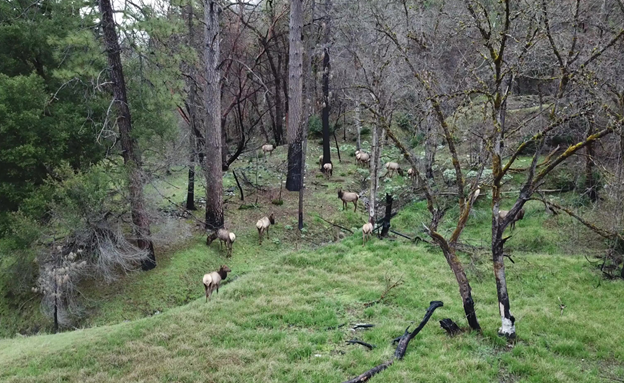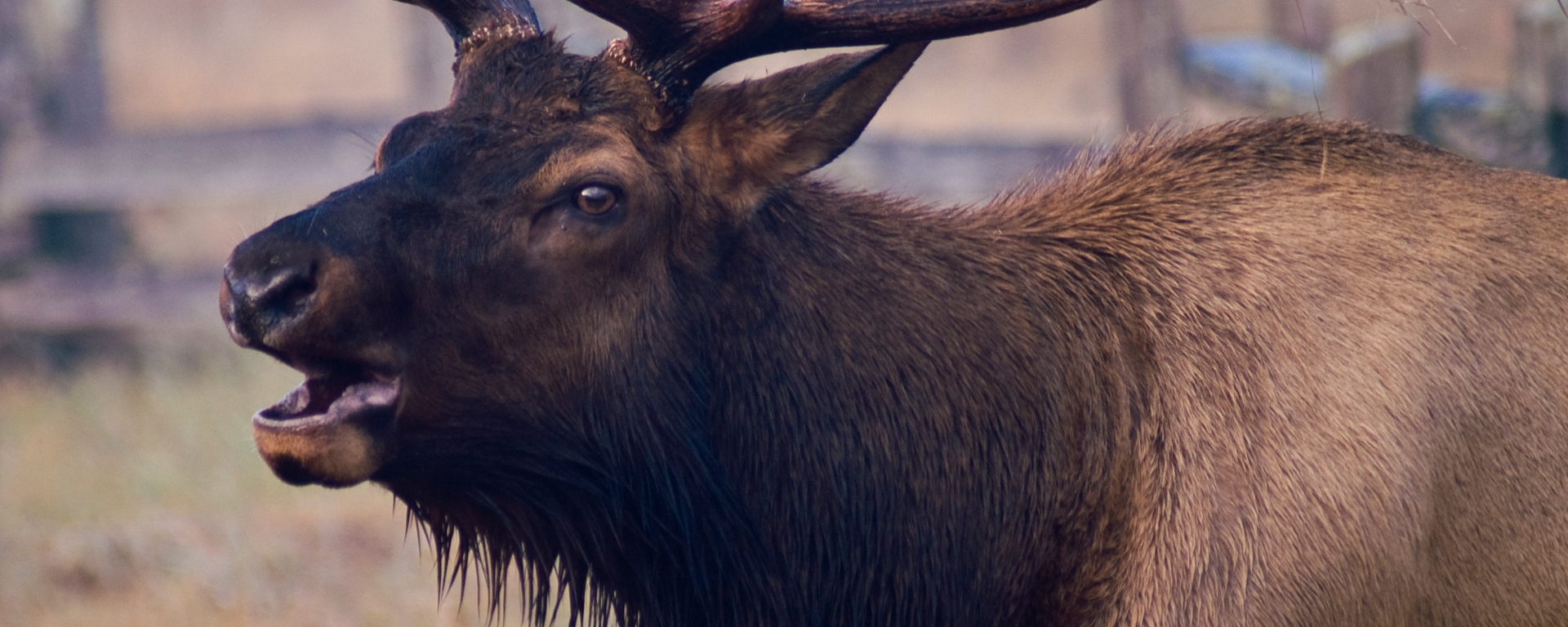In their new article, Connor et al. discuss how prescribed forest burning that uses Karuk traditional ecological knowledge can have significant benefits for elk habitat.
In a Northern California landscape increasingly plagued by severe wildfire, cultural burning, prescribed fire and forest management principles put into practice for generations by Karuk Tribal members are being brought back to restore fire adapted landscapes. Our research shows that this intentional burning based on Karuk traditional ecological knowledge (TEK) results in an additional ecological and social benefit – helping to restore Roosevelt elk habitat.
The research is borne out of the Karuk-UC Berkeley Collaborative, a long-standing research partnership between Karuk Dept. of Natural Resources managers, UC Berkeley, and other researchers to conduct community engaged research that supports ecological restoration and cultural revitalization in Karuk territory.
The Karuk Elk Ecology and Management initiative embarked on a three-year collaborative research project led by the Karuk Tribe Dept. of Natural Resources Wildlife Division (Karuk Wildlife), funded by the California Dept. of Fish and Wildlife, and implemented in partnership with researchers at UC Berkeley, Cal Poly, Humboldt State, and the Univ. of Maryland. The aim was to better understand elk ecology in response to prescribed burns and fuels treatments being implemented by the Western Klamath Restoration Partnership, a Karuk-led collaborative fire management initiative between Tribal, Federal, State and non-government organizations and community members.
Though Karuk people have stewarded elk habitat and hunted elk throughout their territory in northern California since time immemorial, elk were killed off from Karuk landscapes by Euro-American colonists in the 19th century through overhunting. Karuk people were also prohibited from practicing their culture and performing traditional burning practices to manage the landscape. Elk were successfully reintroduced to the landscape in the late 20th century, and now Western science and Karuk TEK have aligned to advocate for prescribed burning as a way to effectively manage wildland fire at a landscape scale.
Not all prescribed burns are created equal, however, and different burn types are often used for different goals and based on local conditions. We found that prescribed burns that more closely matched those used traditionally by the Karuk Tribe, specifically spreading broadcast burns conducted repeatedly over multiple years, had significant positive effects on elk habitat.

Conversely, isolated prescribed burns focused only on reducing fuel loads had a negative impact on elk habitat. However, combining these fuel reduction burns with the spreading broadcast burns in other years had the largest positive effect. As coauthor Bill Tripp, Director of Natural Resources and Environmental Policy at the Karuk Department of Natural Resources, says: “Prescribed fires targeting fuels reduction outcomes should also have cultural objectives related to enhancement of our traditional food, fiber and medicinal resources. As we restore conditions conducive of cultural burning, these intentional burning efforts will become instrumental in maintaining an abundance of quality habitat for species like Roosevelt Elk.”
We posit two theories to explain the connection between traditional burning practices and benefits to elk habitat. The first theory has to do with food supply—broadcast burning covers more ground and clears more shrubs and woody vegetation than fuel reduction burns alone. This allows for increased new plant growth, particularly grasses and non-woody vegetation on which elk prefer to forage. Elk may also prefer these grassy habitats because the lack of dense shrubs and woody vegetation provides less cover for ambushing predators such as mountain lions.
Our findings show a substantial positive effect of returning Karuk TEK to the management of Northern Californian landscapes, but that more research and monitoring is needed to investigate a fuller suite of environmental responses. Furthermore, additional support for Karuk tribal members, knowledge holders, and cultural practitioners is urgently needed, as is reliable funding for the Karuk Tribal Wildlife Program. This program will be key to continuing research, monitoring and management efforts needed to restore elk populations and habitats throughout Karuk Aboriginal Territory.
Read the full paper Karuk ecological fire management practices promote elk habitat in northern california in Journal of Applied Ecology

One thought on “Karuk traditional ecological knowledge enhances elk habitat in Northern California”